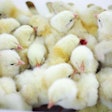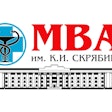
Successfully producing processed chicken not only means overcoming processing challenges, but also fully exploiting the meat’s advantages.
For any chicken processing company wanting to supply as much quality processed chicken as possible, potential issues along the processing line must be addressed. Additionally, poultry companies need to be continuously communicating with, and responding to, consumers to understand what the consumer really wants, and highlighting chicken’s benefits.
Processing plant challenges
Demand for chicken meat continues to rise. While responding to this demand will primarily be met by growing more birds, it can also, in part, be satisfied by reducing waste.
Poultry processing plants must minimize rejects. Rejects are wasted saleable meat, and may be the result of poor management processes during pre-slaughter or in the poultry processing plant.

If birds are poorly handled during capture, transport or hanging, this will be evident on the processed carcass. | Eduardo Cervantes López
Reviewing operations and addressing any issues would not only increase the total volume of meat produced, but also raise the yield per processed bird and reduce cost per kilo of saleable meat -- benefiting the producer and consumer.
Poor capture, transport and waiting in the lairage should all be considered to reduce the number of birds that are harmed or that may be dead on arrival.
A review of operations, however, should not stop there. There are several activities within the processing plant that, when poorly managed, can result in losses. Particular areas of concern are hanging on the overhead conveyor, stunning and bleeding.
In the case of the latter, even if a bird has been otherwise well stunned and slaughtered, a poorly bled chicken with a red appearance will often be rejected.
It is also important to ensure that whole birds are not lost during processing, for example, by falling from the shackles to the floor or becoming lost in the scalding tank.

Minimizing the number of birds dead on arrival at the processing plant is one of the first steps to producing more meat. | Eduardo Cervantes López
Health, hygiene challenges
A constant challenge in producing broiler meat is to ensure that it is healthy and safe. This challenge is likely to intensify as farming methods change to reflect changes in on-farm medicines use.
As restrictions on antibiotics increase, controls on-farm and in the processing plant will need to become tighter.
Additional checks will need to be put in place to prevent or identify and neutralize the growth of pathogenic bacteria such as Escherichia coli and Campylobacter. Poultry processors must be prepared to play their part to address this potential problem.
Commercial challenges
In addition to addressing problems in producing processed chicken, to gain market share and greater consumer engagement, the broiler industry will need to innovate -- incrementally and disruptively -- and communicate more with consumers.
Different social groups have different wants and needs, and the broiler industry can only benefit from understanding what these are. Some may be obvious and some less so, while others are yet to be created.
Various companies, for example McDonald’s and Apple, have become household names, and this has been achieved through delivering what consumers want and through innovation and constant marketing. Might these companies not offer models that the poultry industry could follow?
And it is not simply a case of offering a good product and marketing it well; the poultry industry’s offering needs to be made available where consumers want to access it. Supermarkets and restaurants may well be the standard routes through which processed chicken is usually bought, but are there other channels that are yet to be exploited?
Highlighting the positives
Poultry are efficient convertors of grain into meat and, in a world where resources are becoming scarcer in relation to the purchasing power of the ever-growing population, cereals need to be used as judiciously as possible.
It is here where poultry production has advantages over the production of other meats, given that poultry need less cereal to produce a kilo of meat than other animals.
This not only gives poultry meat a cost advantage, but also positions it well with consumers from a sustainability viewpoint.
Additionally, poultry meat does not come with some of the concerns associated with other meats. While fish may be seen as a similarly healthy option, ocean-caught fish do not come with the same traceability guarantees that come with farmed chicken. Traceability is another area of growing importance to consumers that the industry would do well to highlight.
Could vending machines help sell processed chicken?















